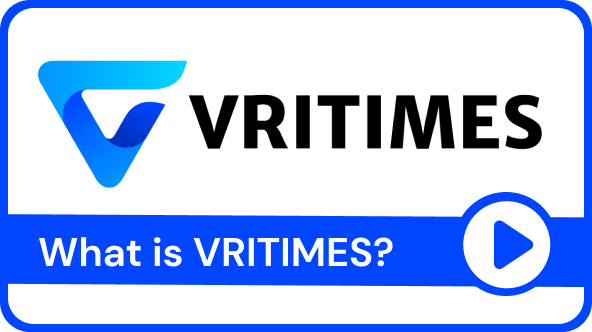/ How IR and PR Collaborate for Stronger Brand Credibility
How IR and PR Collaborate for Stronger Brand Credibility
How IR and PR Collaborate for Stronger Brand Credibility—Transparency and trust are vital to a company’s reputation. Investor Relations (IR) and Public Relations (PR) play equally critical yet distinct roles. IR focuses on maintaining confidence among investors and shareholders, while PR manages how the broader public perceives the brand. When these two functions work in harmony, they create a unified communication strategy that reinforces credibility, builds stakeholder trust, and enhances the company’s long-term reputation. This article examines how IR and PR can collaborate effectively to convey a consistent message, manage crises with clarity, and enhance brand credibility in an increasingly interconnected world.
Also Read : Why PR and Marketing Work Best Hand in Hand
What is IR (Investor Relations)?
Investor Relations (IR) is the strategic communication process between a company and its investors, shareholders, and financial analysts. The goal of IR is to provide transparent and accurate information about the company’s financial health, performance, and growth plans. It helps maintain investor confidence, supports stock valuation, and ensures compliance with financial regulations.
Common IR activities include publishing financial reports, hosting investor meetings, managing quarterly earnings calls, and handling communications related to corporate governance.
What is PR (Public Relations)?
Public Relations (PR) is the practice of managing how a company communicates with the public, media, and stakeholders to build and maintain a positive reputation. PR focuses on storytelling, branding, and reputation management through various channels — from press releases and media coverage to social media engagement and crisis communication.
PR professionals aim to create a favorable image, strengthen brand awareness, and build trust between the organization and its audience.
The Different Roles of IR and PR in an Organization
While both Investor Relations (IR) and Public Relations (PR) focus on communication and reputation, they serve different audiences and purposes within an organization. Understanding their distinct roles is key to building a unified brand image that resonates across all stakeholders.
Investor Relations (IR): Communicating with the Financial Community
The primary role of IR is to bridge the gap between the company and its investors, shareholders, and financial analysts. It ensures that the financial market receives transparent, consistent, and timely information about the company’s performance and strategic direction. Key responsibilities of IR include:
Preparing and publishing financial reports and earnings releases
Managing investor meetings, conferences, and annual general meetings (AGMs)
Communicating business strategies, growth outlook, and risk management
Maintaining regulatory compliance in financial disclosures
In short, IR is focused on financial credibility and shareholder confidence. It helps investors make informed decisions while reinforcing the company’s stability and transparency.
Public Relations (PR): Managing the Company’s Public Image
PR, on the other hand, plays a broader role in shaping how the general public, customers, and media perceive the company. It handles storytelling, media outreach, crisis communication, and brand positioning. Core functions of PR include:
Writing and distributing press releases and media statements
Building media relationships and securing positive coverage
Managing corporate reputation and crisis response
Developing branding campaigns and content that highlight company values
PR focuses on emotional and reputational credibility — creating goodwill, engagement, and trust beyond financial stakeholders.
Complementary Yet Distinct
While IR communicates facts and figures, PR communicates stories and values. Together, they ensure the company is viewed as both financially trustworthy and socially responsible, forming a complete and credible brand reputation.
Effective Collaboration Strategies Between IR and PR Teams
For a company to maintain strong credibility, its Investor Relations (IR) and Public Relations (PR) teams must communicate in sync. While IR focuses on investors and financial markets, and PR manages the brand’s public image, both share the same goal — building trust through transparency, consistency, and strategic messaging. To achieve that, here are several strategies that make their collaboration more effective:
1. Align Messaging Across All Channels
Both teams must ensure that all external communications, from financial reports to media statements, convey a consistent narrative. This prevents mixed signals that could confuse investors or the public. Regular coordination meetings between IR and PR are essential to align on tone, key messages, and timing.
2. Create a Unified Communication Calendar
Developing a shared editorial and event calendar helps synchronize announcements such as quarterly earnings, product launches, or leadership changes. This alignment ensures that both financial and public narratives reinforce each other rather than overlap or conflict.
3. Share Insights and Feedback
IR and PR teams each gather valuable data IR monitors investor sentiment and market reactions, while PR tracks media coverage and public opinion. Sharing these insights allows both sides to anticipate potential issues and craft more informed communication strategies.
4. Collaborate on Crisis Communication
In times of crisis, consistency and speed are crucial. A joint response plan between IR and PR ensures that investors, media, and the public receive clear, accurate, and unified information. This minimizes reputational damage and reinforces the company’s accountability.
5. Develop Joint Training and Messaging Workshops
Conducting shared communication workshops helps both teams understand each other’s priorities and language. This fosters mutual respect and equips spokespersons with coherent, audience-specific talking points.
6. Use Data to Strengthen Credibility
Both IR and PR can collaborate in using performance metrics like media reach, sentiment analysis, or investor confidence scores to measure the impact of their communication strategies. Data-backed storytelling builds credibility across all audiences.
Also Read: How To Analyze And Evaluate The Results Of Press Releases
Benefits of an Integrated IR–PR Approach
When Investor Relations (IR) and Public Relations (PR) operate in alignment, a company’s communication becomes more powerful, cohesive, and trustworthy. Rather than working in silos, both functions can combine their strengths to create a unified strategy that enhances stakeholder confidence and strengthens the brand’s long-term reputation. Below are some key benefits of an integrated IR–PR approach:
1. Consistent Messaging and Brand Voice
An integrated approach ensures that investors, media, and the public hear a single, coherent message about the company’s mission, performance, and values. Consistency across financial and non-financial communications reinforces credibility and reduces the risk of misinterpretation.
2. Stronger Stakeholder Trust
By aligning transparency in financial reporting (IR) with authentic storytelling and reputation management (PR), companies can build deeper trust among both investors and the general public. This alignment shows accountability and integrity across all levels of communication.
3. Improved Crisis Management
In moments of crisis, collaboration between IR and PR allows for faster, more coordinated responses. While IR focuses on reassuring investors, PR ensures that public messaging remains clear and empathetic. Together, they minimize damage to both financial confidence and brand image.
4. Enhanced Corporate Reputation
A unified IR–PR strategy helps position the company as both financially reliable and socially responsible. When the market sees that a company communicates openly and responsibly, it enhances its overall reputation, a key driver of long-term business value.
5. Greater Efficiency and Strategic Insight
Working together allows both teams to share resources, data, and feedback — from investor sentiment to media analytics. This collaboration not only increases operational efficiency but also provides richer insights for more strategic decision-making.
VRITIMES: Best Press Release Distribution Service
Want your business story to reach the right audience? With VRITIMES, you can distribute your press release quickly, affordably, and effectively, connecting with hundreds of trusted media outlets across Southeast Asia. Whether you’re a startup, SME, or established enterprise, VRITIMES guarantees your news gets published with verified coverage and comprehensive analytics to measure your reach and impact. Don’t let your message fade into the noise—elevate your visibility and credibility today with VRITIMES, the leading press release distribution service built to power your brand’s success.
Ready to get your story published and seen? Click HERE for further information.






